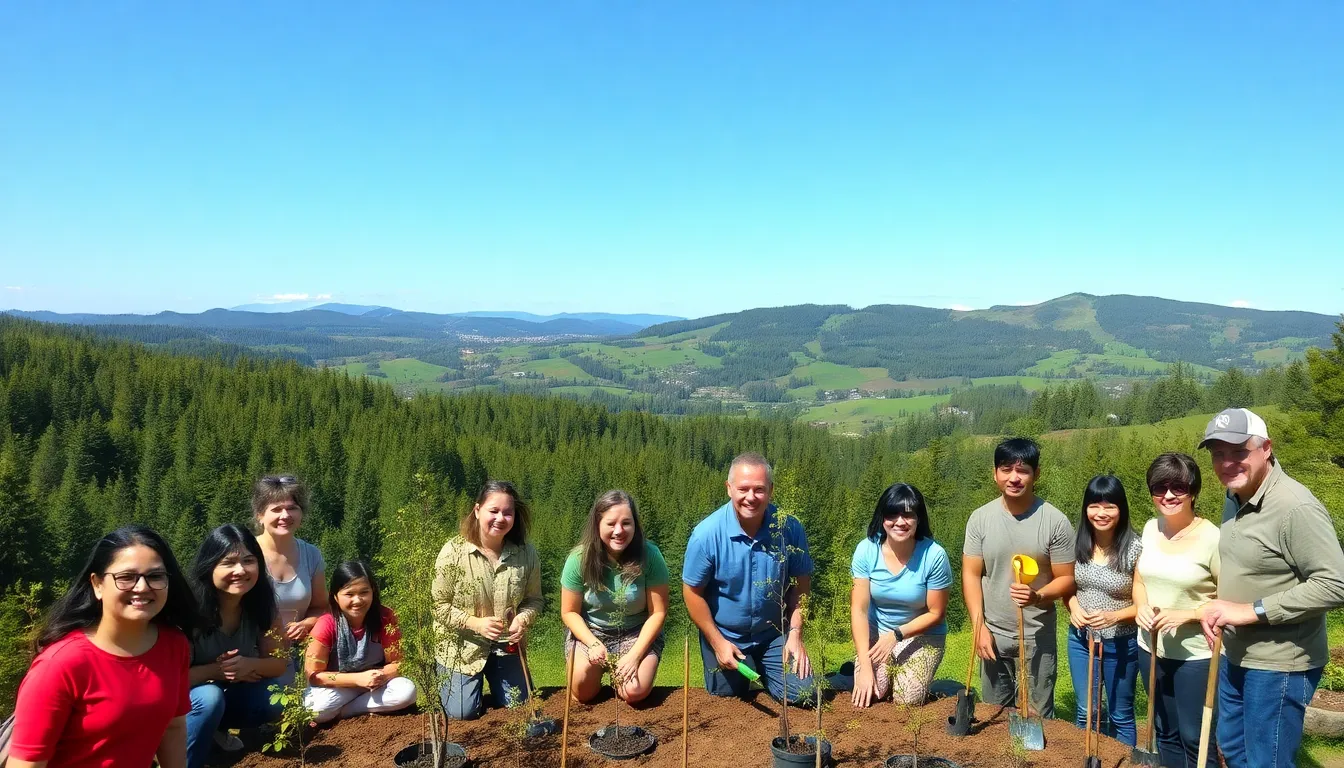Oregon’s stunning landscapes are more than just a pretty backdrop; they’re at the heart of a vibrant environmental movement that’s making waves across the country. From the lush forests to the breathtaking coastlines, the state is a hotbed of eco-innovation and activism. But don’t let the picturesque views fool you—Oregon’s environmental news is packed with drama, intrigue, and a sprinkle of humor that keeps everyone on their toes.
Table of Contents
ToggleRecent Developments in Oregon Environmental News
Recent updates showcase Oregon’s commitment to environmental sustainability and proactive policymaking. The state’s environmental news reflects ongoing changes that aim to protect its natural landscapes.
Statewide Policy Updates
Oregon’s policymakers introduced significant measures addressing climate change. A statewide initiative emphasizes reducing greenhouse gas emissions by 50% by 2035. Communities are encouraged to implement renewable energy projects to enhance local resilience. Furthermore, new incentives promote sustainable agricultural practices, helping preserve soil health and water resources.
Key Legislative Actions
The Oregon legislature passed a pioneering bill focused on protecting water quality. This legislation calls for stricter regulations on industrial discharges and agricultural runoff. Notably, a conservation fund received increased allocations to support habitat restoration projects across the state. Lawmakers also approved measures aimed at boosting urban green spaces, improving air quality and enhancing community health.
Conservation Efforts in Oregon

Oregon actively engages in various conservation initiatives to protect its unique ecosystems and biodiversity. These efforts reflect a commitment to sustainability at local, state, and national levels.
Protecting Endangered Species
Efforts to protect endangered species receive significant attention. The Oregon Department of Fish and Wildlife regularly collaborates with conservation groups to monitor and support populations at risk, such as the Northern Spotted Owl and the Oregon Silverspot Butterfly. By establishing protected habitats and implementing recovery plans, Oregon aims to enhance species survival and resilience. Public awareness campaigns also promote the importance of biodiversity and habitat preservation, fostering community engagement in local conservation efforts.
Initiatives for Habitat Restoration
Habitat restoration initiatives play a crucial role in Oregon’s conservation strategy. Programs focus on restoring wetlands, forests, and riparian areas to improve ecological health and enhance wildlife habitats. Organizations, like the Oregon Watershed Enhancement Board, fund projects that remove invasive species, stabilize riverbanks, and replant native flora. Collaborating with local communities ensures both environmental and social benefits, encouraging investment in the continued health of Oregon’s natural spaces. These initiatives directly contribute to the goals of reducing greenhouse gas emissions and improving water quality across the state.
Climate Change Initiatives
Oregon actively leads various climate change initiatives with a focus on sustainability and renewable energy.
Renewable Energy Projects
Oregon emphasizes the expansion of renewable energy projects, particularly wind and solar developments. The state aims for 100% clean energy by 2040, reflecting its commitment to reducing reliance on fossil fuels. Local communities are encouraged to invest in rooftop solar systems. Incentives for businesses include tax credits and grants that support clean energy implementations. Innovative programs like the Community Solar Program allow residents to share benefits from solar energy, promoting equity in energy access. Additionally, significant investments are directed toward infrastructure that supports electric vehicles, making it easier for residents to transition away from traditional combustion engines.
Community-Level Adaptation Strategies
Local governments engage in community-level adaptation strategies designed to mitigate climate impacts. Collaborative action plans include enhancing flood management systems, protecting key habitats, and improving water resources. Neighborhood partnerships facilitate stormwater management projects that reduce urban flooding risks. This groundwork creates resilient, eco-friendly spaces that benefit both residents and wildlife. Outreach programs raise awareness about climate adaptation techniques, fostering community involvement. Since several metropolitan areas prioritize green infrastructure, projects like urban tree canopies enhance air quality and reduce heat island effects while improving residents’ health.
Local Environmental Issues
Oregon faces significant environmental challenges that shape its sustainability efforts and policy decisions. Two key issues stand out: water quality concerns and forest management practices.
Water Quality Concerns
Water quality remains a pressing issue in Oregon, particularly concerning industrial discharges and agricultural runoff. Stricter regulations introduced aim to minimize pollution, ensuring cleaner drinking water and healthier ecosystems. The state’s pioneering bill focusing on water quality encourages increased funding for habitat restoration projects that protect vital watersheds. Local communities are urged to participate in these efforts, recognizing the direct impact clean water has on human health and biodiversity. Public awareness campaigns promote responsible practices among residents and businesses alike, fostering a collective commitment to safeguarding Oregon’s water resources.
Forest Management Practices
Forest management practices play a crucial role in Oregon’s environmental health and wildfire prevention strategies. The state prioritizes the creation and implementation of sustainable forestry techniques to enhance ecosystem resilience. It focuses on thinning overgrown areas and utilizing controlled burns to reduce wildfire risks. Collaborative efforts between state agencies and local organizations aim to protect forested areas while ensuring economic viability for communities dependent on timber. Educational programs strive to raise awareness about the importance of healthy forests in carbon sequestration, wildlife habitat protection, and water retention. These measures represent a comprehensive approach to managing Oregon’s valuable forest resources and ensuring long-term sustainability.
Oregon’s environmental landscape is a vibrant tapestry of innovation and activism. The state’s commitment to sustainability and proactive policymaking is evident in its ambitious climate goals and groundbreaking legislation. With ongoing efforts to protect biodiversity and enhance water quality, Oregon sets a powerful example for others to follow.
As local communities rally around conservation initiatives and renewable energy projects, the state’s leadership in environmental stewardship continues to inspire. The collaboration between government agencies and citizens fosters a sense of shared responsibility, ensuring that Oregon’s natural beauty thrives for generations to come. The journey toward a sustainable future is underway, and Oregon is at the forefront of this vital movement.


